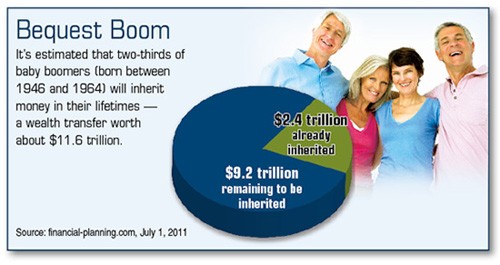Many people who inherit a tax-deferred IRA are confronted with a complex array of rules, restrictions, and deadlines that may make it difficult for them to determine how to proceed. Unfortunately, beneficiaries must often make binding decisions about inherited retirement assets before they may be prepared to do so.
Of course, beneficiaries can liquidate inherited IRA assets as they wish, but they should keep in mind that amounts withdrawn from a traditional IRA are taxed as ordinary income. A better long-term strategy might be to take only the withdrawals required by the IRS, leaving the rest of the inherited assets untouched to keep accumulating on a tax-deferred basis for as long as possible. This strategy may also help spread the tax liability over a longer period of time.
Understanding RMDs
Traditional IRAs are subject to required minimum distributions (RMDs). For original owners, RMDs must begin no later than April 1 of the year after the year in which the investor reaches age 70½. In subsequent years, RMDs must be taken by December 31. Annual RMD amounts are calculated based on the account value (on December 31 of the previous year) and the owner’s life expectancy. This information can be found in the IRS Uniform Lifetime Table.
 IRA owners (as well as people who inherit a traditional IRA) who fail to take an RMD could be hit with a 50 percent tax penalty on the amount that should have been withdrawn. IRA beneficiaries are subject to special distribution rules. Spouses typically have more choices than nonspouses.
IRA owners (as well as people who inherit a traditional IRA) who fail to take an RMD could be hit with a 50 percent tax penalty on the amount that should have been withdrawn. IRA beneficiaries are subject to special distribution rules. Spouses typically have more choices than nonspouses.Three Options for Spouses
1. Roll assets to a new IRA. If the surviving spouse is the sole designated beneficiary, the funds can be rolled into a new account in his or her name. In this situation, the surviving spouse does not have to take RMDs until age 70½, and he or she can name new account beneficiaries. However, a 10% early-withdrawal penalty would apply to distributions prior to age 59½.
2. Transfer assets to an “inherited” or “beneficiary” IRA. If the deceased spouse died before age 70½, the survivor’s first RMD must be taken by December 31 of the year after the decedent’s death, or by December 31 of the year the deceased would have turned 70½ (whichever is later). If the deceased spouse died after age 70½, the surviving spouse must begin taking RMDs before December 31 of the year after death.
3. Pass assets to children or grandchildren. The surviving spouse (as sole beneficiary) can disclaim the IRA and allow it to pass directly to the account’s contingent beneficiaries.
Other Heirs
Generally, nonspouse beneficiaries must begin taking RMDs by December 31 of the year following the year of the original account owner’s death. However, if the original owner passed away after reaching age 70½ and did not take a current-year RMD, the beneficiary must take a distribution by December 31 of the year of death. It’s important for the IRA to be properly titled with the words “beneficiary” or “inherited.” There is no 10% early-distribution penalty for IRA beneficiaries.
RMD rules are even more complex when multiple beneficiaries are designated, and each choice could have far-reaching implications. You may want to seek legal or tax counsel before making any final decisions.
The information in this article is not intended as tax or legal advice, and it may not be relied on for the purpose of avoiding any federal tax penalties. You are encouraged to seek Naperville tax, legal advice or Naperville investment advisor from an independent professional advisor. The content is derived from sources believed to be accurate. Neither the information presented nor any opinion expressed constitutes a solicitation for the purchase or sale of any security. This material was written and prepared by Emerald. Copyright © 2012 Emerald Connect, Inc.

